#Jose burgos
Text

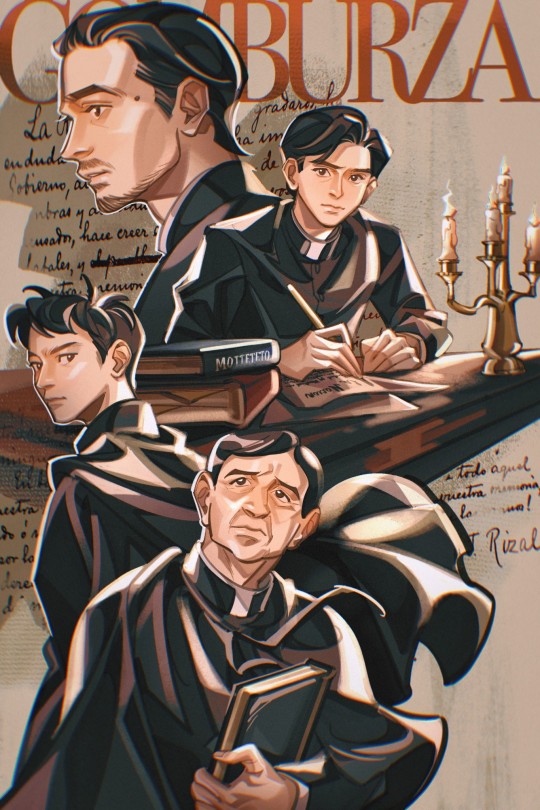





GOMBURZA❤️🔥
103 notes
·
View notes
Text


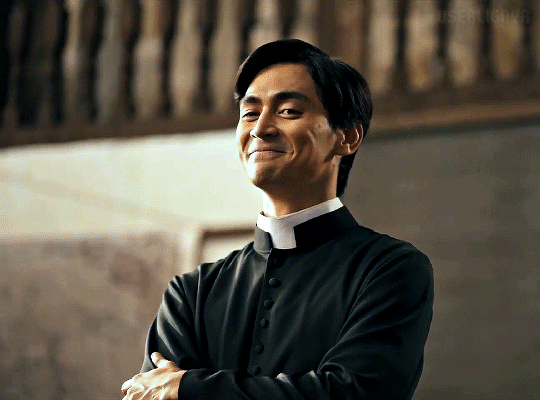





CEDRICK JUAN as PADRE JOSE BURGOS
in GOMBURZA (2023) | dir. pepe diokno
#gomburza#gomburzaedit#jose burgos#cedrick juan#mmff 2023#perioddramaedit#philippines#*pinoy pride#*pcjcu#pinoysource#userligaya#i miss giffing my bebe <33#cedjuan!burgos in hd FINALLY FINALLY#idc abt color scheme anymore I'M SHOWING HIS RANGE
106 notes
·
View notes
Text

*twirls hair* so there's this priest from manila-centric philippine history
#gomburza#padre burgos#jose burgos#philippine history#cedrick juan#I CAVED IM SORRY#ame art#gomburza 2023#gomburza movie
98 notes
·
View notes
Text
I finally watched it guys.. i finally did(instead of focusing in finals)


Hes so fun to draw:33

@curiouscatto thanks bestie👍
#art#fanart#traditional art#gomburza#padre burgos#netflix#gomburza netflix#padre jose burgos#i hope this distracts me from existential crisis Hah
15 notes
·
View notes
Text

Gilbert Salinas, “As We Speak”, 2022, Mixed media on canvas
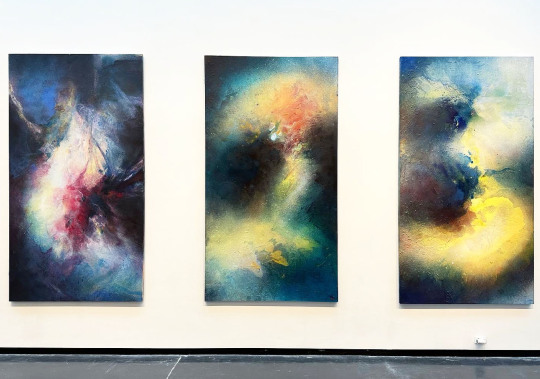
Angel Rivera Morales, "Dystopian Paradise I, II, and III", 2023, Acrylic and oil on canvas
Currently at Creative Pinellas is the group exhibition Keepers of Heritage: Hidden Tales / Custodios de la Herencia: Cuentos Ocultos, on view until 10/15/23.
From the Creative Pinellas website-
Keepers of Heritage is an extended collaborative effort whose purpose is to document, present and promote the contributions of artists of Puerto Rican artists in the Caribbean archipelago and abroad.
Its roots go back to 2015 with the presentation of the “La Diaspora” exhibition at the Terrace Gallery in Orlando City Hall. Since then, the collective has expanded and traveled to institutions such as the National Museum for Puerto Rican Arts and Culture in Chicago, the Appleton Museum of Art in Ocala, and the Albin Polasek Museum in Winter Park, Florida.
Over eight years, the collective has documented and presented the work of nearly 30 artists whose artistic practices include a diversity of mediums such as painting, drawing, sculpture, engraving, multimedia, and photography.
Artists included in this exhibition-
Brenda Cruz, Alejandro de Jesus, Jose Feliciano, Carmelo Fontanez Cortijo, Domingo Garcia-Davila, Francisco García-Burgos, Martin García-Rivera, Michael Irrizary-Pagán, Juan Nieves-Burgos , Yasir Nieves, Angel Rivera-Morales, Rafael Rivera-Rosa, Carmen Rojas-Gines, Pablo Rubio, Aby Ruiz, Gilbert Salinas, Joan Emanuelli Sanchez, Luis Soto, Valentin Tirado Barreto, Rigoberto Torres
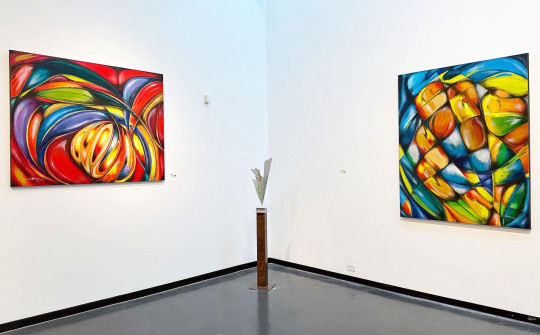
Juan Nieves Burgos, "Germinar de patria" and "Mundo sin tiranos", 2019; Carmen Rojas Gines, "She Warrior-SW3 "Guerrera"-G3", Steel metal
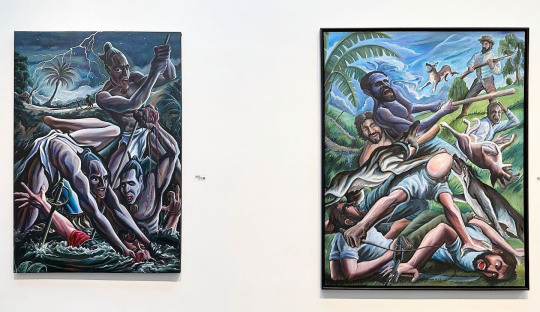
Valentin Tirado Barreto, "Salcedos Death- La Muerte de Salcedo" and "Rebellion of the slaves- Rebelión", Acrylic on canvas

Jose Feliciano- "The Letter", 1988, Oil on canvas
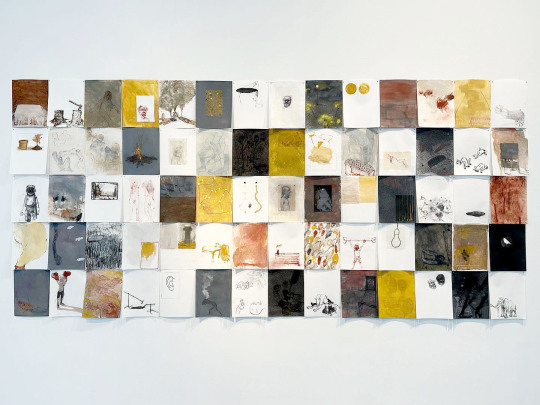
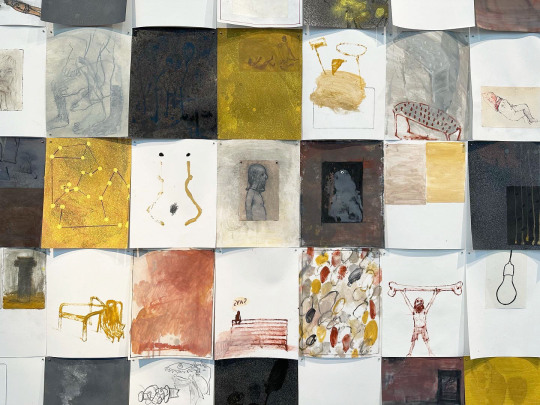
Aby Ruiz, "Untitled", 2020, Oil, charcoal, and spray paint on paper
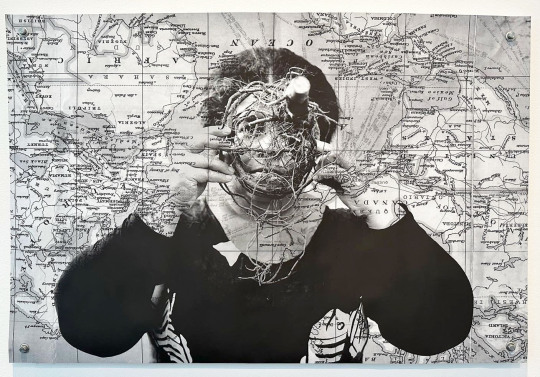
Brenda Cruz, "América-Yo-Europa", 2018, Digital photograph
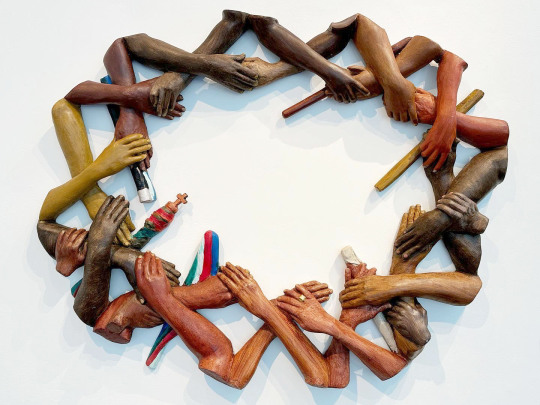
Rigoberto Torres- "Crown of Hands", 2000, Livecast sculpture

Rafael Rivera Rosa, "Introspeccion", 2015, Acrylic on canvas
#Aby Ruiz#Alejandro de Jesús#Angel Rivera-Morales#Art#Art Shows#Brenda Cruz#Carmelo Fontanez Cortijo#Carmen Rojas-Gines#Collage#Creative Pinellas#Domingo Garcia-Davila#Drawing#Florida Art#Florida Art Shows#Florida Artist#Florida Artists#Francisco García Burgos#Gilbert Salinas#Joan Emanuelli Sanchez#Jose Feliciano#Juan Nieves-Burgos#Luis Soto#Martin García-Rivera#Michael Irrizary-Pagán#MIxed Media Art#Pablo Rubio#Painting#Photography#Puerto Rican Artists#Puerto Rico
1 note
·
View note
Text
LITERAL PLANET: LAS ESPAÑAS DE GARCÍA LORCA
LITERAL PLANET: LAS ESPAÑAS DE GARCÍA LORCA

View On WordPress
#ANTONIO MACHADO#BERGSON#CARMEN DE BURGOS#EL 86 ANIVERSARIO DE SU MUERTE VIOLENTA#FEDERICO GARCIA LORCA#GOYA#GUTIERREZ SOLANA#JOAQUIN SOROLLA#JOSE MARTINEZ RUIZ AZORIN#KIERKEGAARD#LA II REPUBLICA#LAS ESPAÑAS#LAS ESPAÑAS DE GARCÍA LORCA#LAS OBRAS DE GARCIA LORCA#LITERAL PLANET#lomasleido#MARRUECOS#MIGUEL DE UNAMUNO#NIETZCHE#PABLO SARASATE#SCHOPENHAUER#TERESA FERNANDEZ HERRERA MEJOR PRENSA ESPECIALIZADA 2021#TERTULIA DEL CAFÉ POMBO#THE SPAINS OF GARCIA LORCA
1 note
·
View note
Note
I was just curious but do you have any recs for period dramas about the philippines? I want to expand my period drama watching and im not quite sure where to start
Oh, the monster you've unleashed. YES I do have so many period dramas from and about the Philippines. Unfortunately, not all of them might be accessible to you if you're outside of the Philippines. Some of them are found on Amazon Prime, Netflix, and MUBI though. I'll make sure to put a lil note next to each film if they are. Also! these vary in genre (meaning: not all of them are war films, and some of these are horror films-- because this is me we're talking to, heh). I also have copies of some of these and will make a lil note next to each film if it's available for sharing, though I'll only give the link via DM. Please note, however, that they are all either in Tagalog, Bisaya, and/or other local Philippine Languages and not all of them have subtitles!
I also have very nuanced relationships with all these films, since Philippine History was my undergrad of choice. But to keep this post as brief as possible, I'm not going to talk about them at length. Though I will be including trigger warnings. Also note... some of these movies kinda suck HAAHAHAHA but I had way too much fun watching them so like. Please don't tell me they suck, please. I love them too much.
Also tagging @emmylynnaa because I promised her a similar list.
This is sorted by eras in Philippine History. Enjoy! (under the cut because it got long):
Spanish Occupation Era (1565 to 1898)
GomBurZa (2023) – A film following the GomBurZa, the three native Filipino Roman Catholic priests Gomez, Burgos, and Zamora executed during the latter years of the Spanish colonial era. TW: period typical violence. Furthermore, this is a Jesuit produced film so like. Once again. Take it with a grain of salt.
Jose Rizal (1998) - Jose Rizal's life and works are recounted through a series of non-linear flashbacks which reflect on various aspects of his life - as writer, propagandist, lover, friend, brother, doctor, and the man that inspired a revolution. Available on MUBI. TW: depiction of sexual assault by a priest. I also have a love-hate relationship with this film because on one hand, literally shaped my love of history. On the other hand, it is the MOST idealistic depiction of Jose Rizal ever + very historically inaccurate in many places, please watch this with a grain of salt.
Maria Clara at Ibarra (2022 – 2023) – A series about a girl from the 21st century who is magically transported into Jose Rizal’s famous novels Noli me Tangere and El Filibusterismo (you know, the novels that helped spark the Filipino Revolution against the Spanish). The synopsis sounds cheesy but trust me, it’s very good. Available to watch on the GMA official webpage. I just don’t know if you can access it outside of the country. TW: rape, abuses of the Catholic church, period typical violence, abuses of Spanish colonialists. A personal favorite—the costumes? Divine. And the character arcs are also really lovely. Helps you understand Philippine contemporary culture, too.
Katipunan: TV Mini Series (2013) – A mini-series depicting the creation of the Kataastaasan Kagalang-galang na Katipunan ng mga Anak ng Bayan (or the KKK—no, not the white supremacist group; that’s unfair, by the way, we did it first), the revolutionary organization founded in 1892 by Filipino Nationalists against Spanish Colonialization. Available to watch on the GMA official webpage. I just don’t know if you can access it outside of the country. TW: depictions of rape aftermath by Spanish soldiers, period typical violence, torture, graphic depictions of a corpse. This is a personal favorite of mine.
Hele sa Hiwagang Hapis/A Lullaby to the Sorrowful Mystery (2016) - Andrés Bonifacio is celebrated as the father of the Philippines Revolution against Spanish colonial rule. This eight-hour epic examines this myth, undertaking an expedition into history through various interwoven narrative threads, held together by an exploration of the individual’s role in history. Available on Mubi. TW: it is literally eight hours long. But that’s Lav Diaz for you. I love him, but oh my god is he an acquired taste.
Ang Kababaihan ng Malolos (2014) - The saga of the 20 Filipino women who petitioned for the opening of a school in a time when women weren’t given the chance to do so.
Ganito Kami Noon... Paano Kayo Ngayon? (1976) – Set during the end of Spanish colonization and the start of American colonization. After his mother's death, the simple-minded and naïve Kulas (Christopher De Leon) begins his much-awaited trip to Manila. On his way to Manila, he mindlessly takes on the mission of retrieving a friar's son and bringing him to the friar's residence.
Mallari (2023) - A horror film chronicling the deeds of the first recorded serial killer in the Philippines. This film spans decades, all the way up to present day. It's kinda stupid. Like. Really stupid. That's ok. We watch it because we want to see Piolo Pascual and JC Santos covered in blood. TW: oh my god so many bodies and so much gore.
Filipino-American War and America Occupation (1899 – 1940s) (this era has the best films, actually, if you want a place to start and start strong? start here)
Amigo (2010) - A local leader of a small Filipino barangay must decide whether to keep the peace with the American troops occupying his village or join the insurgency with his brother and son. TW: racism, sexual harassment, graphic depictions of corpses, gore, period typical violence.
Heneral Luna (2015) - Set during the Philippine-American war, Heneral Luna follows the life of one of Philippine History's most brilliant soldier, General Antonio Luna, as he tries to lead his countrymen against colonial masters new and old, and to rise above their own raging disputes to fulfill the promise of the Philippine Revolution. Available on Netflix. TW: short scene depicting the aftermath of sexual assault, period typical violence, and graphic depictions of a corpse. Again, one of my favorites. I have so many happy memories of this film + the fandom it birthed! I miss it sometimes.
Angelito (2018) – The short film that bridges both Heneral Luna and Goyo: Ang Batang Heneral, depicting the brothers Manuel and Jose Bernal – Antonio Luna’s aides-de-camp – and their youngest brother Angel, two days before the General’s assassination. This film you can find on Youtube!
Goyo: Ang Batang Heneral (2019) – The sequel of Heneral Luna, this film follows the story of Gregorio 'Goyo' del Pilar, one of the youngest Generals during the Philippine-American War who fought in the historic Battle of Tirad Pass. Available on Netflix. TW: short scenes of torture, period typical violence, and graphic depictions of a corpse. Again, a personal favorite for the same reasons stated above. Though it’s not as strong as Heneral Luna, I gotta say.
Ang Larawan (2017) - In a musical tale about standing together against materialism, two impoverished sisters anguish over whether or not to sell a painting, the final masterpiece by their recluse father. A bitter struggle for survival against betrayal set in pre-World War II Manila. A personal favorite, oh my god. This film. Oh my god, this film.
World War 2 and its aftermath (1940 – 1950)
Quezon’s Game (2018) - In 1938, Philippine President Manuel L. Quezon, military adviser Dwight D. Eisenhower, along with other notable figures, set out to rescue Jewish refugees fleeing Nazi Germany. Quezon simultaneously deals with a relapse of tuberculosis. Available on Amazon Prime. TW: talk of genocide and short scenes depicting the murder of Jewish people by the Nazis.
Tatlong Taong Walang Dios (1976) - A woman falls in love with a Japanese soldier during the Japanese Occupation in the Philippines; the whole town turns against her. TW: rape. Think Malena.
Oro, Plata, Mata (1982) - Set in the Philippine island of Negros during World War II, it tells the story of how two hacendero families cope with the changes brought about by the war. TW: rape
Kusina (2016) – Her kitchen. The silent witness to the life and love of Juanita. It is her sanctuary, the place where she creates dishes for her family, friends, even enemies and strangers. Through cooking, she gets to know the people around her. TW: violent child birth, death of mother in child birth, sexual harassment by Japanese soldiers. This spans multiple decades, all the way up to Martial Law.
In My Mother’s Skin (2023) - Stranded in the Philippines during World War II, a young girl finds that her duty to protect her dying mother is complicated by her misplaced trust in a beguiling, flesh-eating fairy. Available on Amazon Prime. TW: body horror, gore, explicit depictions of a corpse, period typical violence.
Markova: Comfort Gay (2000) – A coming of age drama film loosely based on the life of Walter Dempster Jr., the last surviving Filipino “comfort gay” (male sex slaves for the Imperial Japanese Army) from World War II. TW: CSA, wartime systemic rape, rape.
Comfort Women: A Cry for Justice (1994) – The story of how two sisters and the rest of the women of Sta. Monica are forced into sex slavery by Japanese soldiers during World War 2. TW: wartime systemic rape, rape, and period typical violence.
Seklusyon (2016) - In 1947, a group of deacons (aspiring priests) on their last week of training are sent to a remote monastery to live in seclusion for seven days to protect them from the devil, who on the last few days of training attempts to break the will of deacons to make them reconsider their choice of becoming priests. During their seclusion, a little girl named Anghela, believed by locals to be a living saint because of her healing abilities, appears at the monastery seeking refuge. Available on Amazon. TW: pedophilia, gore, body horror, Catholicism, religious horror.
Corazon: Ang Unang Aswang (2012) - A psychological thriller film detailing the psychological breakdown of a woman struggling with infertility in post-war Philippines. If you want to see women go feral, this is fun.
Martial Law (1970 – 1980) (actually, you know what? I lied. This era is the era with the best films. God, these are CLASSICS and are the ones that’ll help you understand contemporary Philippine culture the most; definitely start here)
Manila, sa mga Kuko ng Liwanag (1975) - Júlio Madiaga, a 'provinciano', arrives in Manila to search for his beloved, Ligaya. TW: coerced sex work, sexual abuse. Once again, a Filipino cinema classic.
Insiang (1976) - After a teenager is raped by her mother's boyfriend, she sets out to exact revenge on anyone who has hurt her. TW: I mean. It says it right there. Though it’s not actually shown on screen, it is very heavily implied. She doesn’t die in the end, if you’re wondering.
Dekada ’70 (2002) - A middle-class Filipino family struggles to survive in the era of dictatorship. This is a fucking classic in Filipino cinema. Available on MUBI. TW: sexual harrassment, discussion of torture, depictions of wounds and beatings, period typical violence. Martial Law was rough.
Aparisyon (2012) – A psychological drama film set in early 1970s, where the story about the nuns in the period immediately preceding the declaration of martial law by Ferdinand Marcos. The film’s director, Isabel Sandoval, is a transgender woman and an absolute visionary. Her other films Senorita (2011) and Lingua Franca (2019) are also very good, please check it out. All films are available for streaming through the Criterion Channel. TW: rape, religious trauma, period typical violence, Catholicism.
Lihis (2013) - Set in the 70’s during the darkest hours of Philippine History, we follow the story of two young NPA warriors who find themselves entangled in a web of frustration, despair and victory as they fight not only for democracy but also their love for each other. Available on MUBI. TW: Infidelity.
Barber’s Tales (2014) - In a rural town in the Philippines during the Marcos dictatorship, the newly widowed Marilou inherits the town's only barbershop from her husband- a business that has been passed down by generations of men in her husband's family. With no other means of support, she musters the courage to run the barbershop.
Dahling Nick (2015) - Dahling Nick is a docu-drama exploring the life and works of National Artist for Literature Nick Joaquin, who only accepted the National Artist Award on the condition that the Marcos administration release a well-known writer who was being unjustly detained during Martial Law. I love Nick Joaquin. He’s shaped my understanding of the Magical Realist genre far more than any of his contemporaries have. This film is notoriously difficult to get your hands on, so I suggest going to read his anthology by Penguin Classics called the Tropical Gothic instead!
Respeto (2017) - Hendrix is a poor aspiring rapper who wants to make a name for himself in the underground rap battle scene and gain respect in the community. After attempting to rob a second-hand bookstore in the neighborhood, he is discovered by the owner, Doc, an old poet with a haunted past as a dissident. Not necessarily period, but definitely has its roots in Martial Law.
Liway (2018) – A film about the kip, a young boy growing up in a prison as the son of anti-Marcos dissident Cecilia Flores-Oebanda, better known as Commander Liway, during the waning days of the Marcos dictatorship. It is currently streaming on Youtube!
The Kingmaker (2019) - is a 2019 documentary film written and directed by Lauren Greenfield, featuring the political career of Imelda Marcos with a focus on the Marcos family's efforts to rehabilitate the family's image and to return to political power, including her plans to see her son, Bongbong, become President of the Philippines, and the alliance that Bongbong and Imee Marcos established with Rodrigo Duterte in his bid to win the 2016 Philippine presidential election. Available on Youtube! if outside of the Philippines, use VPN.
1980s – 2000s Philippines
Misteryo sa Tuwa (1984) - The fortunes of three impoverished friends and their families abruptly change after an airplane crashes in a nearby mountain.
Alpha Kappa Omega Batch ’81 (1982) – A psychological drama film depicting the titular fraternity's harsh initiation of new batch members as seen through the eyes of pre-med student Sid Lucero. TW: hazing, torture, psychological torture. It’s fucked up, actually.
Himala (1982) – During a total eclipse Elsa, a young girl from rural Philippines, allegedly witnesses an apparition of the Virgin Mary on top of the hill where, as an infant, she was found and adopted by Saling. Said visions change her life and cause a sensation hysteria in a poor, isolated northern village in the midst of drought. TW: rape, religious fanaticism, religious trauma.
Adela (2008) - The story of Adela, which takes place in the span of one day, is a heartbreaking story of a woman who longs for the company of her loved ones. This isn’t actually period. This film just breaks my heart. And of course, it has acting legend Anita Linda in it. How could I not recommend it?
Now Showing (2008) - Rita is named after a famous American movie star whom her late, former actress grandmother once adored. She lives in one of Manila’s oldest districts with her mother and aunt. Years later, she is still the same girl enamoured with television, now tending to her aunt’s stall selling pirated DVDs.
Elegy to the Visitor from the Revolution (2011) - A woman from the end of the 19th century visits modern day Philippines and observes three interwoven stories: that of a prostitute, a group of criminals and a musician. This is another Lav Diaz one. It’s long.
K’na The Dreamweaver (2014) - K’na is a young woman coming into her own in the mountains of South Cotabato, where the T’boli live, overlooking the majestic and mystical Lake Sebu. She is part of the royal family of the South bank of the lake, part of the clan that was banished from the North Bank centuries ago after what the elders call The Great Betrayal. At a young age, K’na, is trained in the art of weaving the T’bolit’nalak. The design of the t’nalak fabric comes from the visions granted by Fu Dalu, the goddess of abaca, only to deserving women who become dreamweavers. K’na’s grandmother, Be Lamfey, is the village’s last master dreamweaver. When Be Lamfey dies, the gift of dreamweaving is passed to K’na and her father, LobongDitan, decides to put an end to the warring clans of Lake Sebu once and for all by arranging a marriage between K’na and Kagis, the heir to the throne of North bank. Meanwhile, K’na has fallen in love with Silaw, a childhood friend whose family supplies the finest abaca fibers to the dreamweavers. Silaw leaves love messages for her by tying bits of abaca thread to a tree outside K’na’s window. As the marriage grows near, a revolution brews among those who do not believe in the union of the two royal clans.
Smaller and Smaller Circles (2017) - Two Jesuit priests, Gus Saenz and Jerome Lucero perform forensic work to solve the mystery revolving around the murders of young boys in Payatas, one of Metro Manila's biggest slum areas. While dealing with the systematic corruption of the government, church, and the elite, the two priests delve into criminal profiling, crime scene investigation, and forensic analysis to solve the killings, and eventually, find the murderer. Available on Netflix. TW: child death, talk of child sexual abuse at the hands of the Catholic Church and at the hands of teachers, graphic depictions of a corpse, film also triggering to folks who suffer from claustrophobia.
Billie and Emma (2018) – An LGBT coming of age story set in the mid-1990s featuring two teenaged girls Billie and Emma as they grapple with topics such as sexuality, family, religion, unplanned pregnancy, and the uncertainty of the future.
#philippine cinema#filipino cinema#film recommendations#film rec#filipino period dramas#period dramas#philippine history#filipino history#please heed the tags there's a lot of violence in there#we have a very violent history
91 notes
·
View notes
Text
"Nawa'y maging mitsa ang ating pagkamatay, para sa liwanag."
- GOMBURZA, 2023

Study portrait of Padre Jose Burgos in Gomburza :DD
Posting this for the 152nd Death Anniversary of GomBurZa. This post is also to remember how their deaths really sparked the fire that fueled the Filipino generation at that time, which led to our freedom today.
#artists on tumblr#my art#fanart#artwork#digital illustration#gomburza#gomburza152#cedrick juan#mmff 2023#gomburza death anniversary
57 notes
·
View notes
Text
GOMBURZA (2023) - MMFF REVIEW

“Vivan Los Filipinos. Mabuhay ang mga Filipino.”
This film is the story of the three martyr priests. Three Filipinos who were part of the native community who were once under Spanish colonial rule and oppression. If you have been updated, or have been listening in your elementary Philippine history classes, it’s GOMBURZA, not MAJOHA.
Despite it being produced by Jesuit Communications, the film was able to execute (No pun intended) a factual depiction on a turning point of Philippine history without overused emphasis of religion. It was able to capture how the Catholic faith was used as an instrument of oppression during the Spanish colonial period (This was especially ironic considering how return of the religious orders, including the Jesuits, were the reason for the silencing of the secularization movement). What also impressed me is that almost every single detail in the movie, even in the dialogue, came from actual events in history. It is evident that enough research was made to make this film as accurate as possible.
The film’s cinematography was able to capture life during the period whether it was amongst the Filipino liberals, the Spanish priests, the Governor-Generals, or even the three main characters in our story. With every other scenes of the film shifting from light to dark atmospheres, this symbolized the reality of Spanish colonization — warmth, acceptance, and friendship amongst fellow Filipinos; and ruthlessness, inhumanity, and oppression from the Spaniards (and even traitors). Adding emphasis to GomBurZa’s (2023) cinematography is its sound design. Just by feeling the cinema floor rumbling and the deeply-voiced voiceover in the film’s ending segment, this film can come to a point where it deserves its own IMAX screening.
Dante Rivero and Cedrick Juan showcase over-the-top stellar performances as Padre Mariano Gomez (played by Rivero) and Padre Jose Burgos (played by Juan). Both actors have embodied their roles, not only due to the fact that they, especially Juan, share a slight resemblance with the real life Mariano Gomez and Jose Burgos. It is also because that they were able to portray their emotions from having a friendly conversation, to later condemning their unfair arrest, trial, and death.
Pepe Diokno's time and effort in conducting research and including every important detail in the production is evident in the whole film itself, as it was not only ACTUALLY based on true events, but was able to evoke emotion and outrage, just like how the Filipinos of the 1870s did at the time.
With all of this said, GomBurZa (2023) is not only a history lesson, but also an immersion into the Spanish colonial rule and the lives of the three priests. Being a history nerd and a cinephile who has since learned the names of the three martyr priests as a little girl in elementary, I can definitely say that this was one of the only film experiences where I had witnessed the breaking of the fourth wall. The whole time I was in the cinema, it felt like I was part of their conversation, like I was a witness to their lives and execution.
What also added to this experience was that I watched the film on Rizal Day, and what better way to commemorate our national hero's contribution to Philippine independence than to learn about where it all started? Like what I always preached to my family:
Without GomBurZa, there will be no Jose Rizal. Without Jose Rizal, there would be no Andres Bonifacio. Without all of them, the Philippines and the Filipino would not exist.
GomBurZa (2023) is a cathartic experience that is definitely for the family. This film is a testament to the importance of appreciating and learning our history. Hopefully it serves as a reminder of our collective past, national identity, and the importance of our freedom.
[Metro Manila Film Festival 2023]
(my film review of "GomBurZa" is also available on letterboxd!)
#movies#writeblr#writing#creative nonfiction#creative writing#nonfiction#ph history#philippine history#period drama#historical drama#film review#film#films#movie#filipino cinema#mmff#mmff2023#mmff 2023#Cedrick juan#enchong dee#Dante rivero#philippines#movie review#gomburza#mariano gomez#Jose burgos#jacinto zamora
34 notes
·
View notes
Text
Mallari is a good horror film. Piolo Pascual plays 3 characters and he is amazing in each of them. The story kept me glued to the screen. The audience screamed, cheered, clapped, and was very engaged from start to finish. Great theatrical experience. I hope it goes on OTT so I can watch it again soon.. it's a great historical gothic film. Not perfect but the storyline is tight and the different time periods are linked together perfectly.
Gomburza is a well-acted historical film. Now I understand why Cedrick Juan won the Best Actor award for MMFF 2023. He acted the heck out of his role as Padre Jose Burgos. Also, watching this film was like watching a character study - not of one particular named character but the character of a Filipino and how that term came to be and the spark of the revolution that would define our history. Don't compare it to Heneral Luna. That one was another great and spectacular movie, but its fire is different. Gomburza is more of a slow burn, taking its time to lay down the foundations of what the country fought for and the unifying idea that drove it -- the identity of the Filipinos.
Memorable lines include (paraphrased out of memory):
"No indio will rebel. We [the Church] taught them to be obedient."
"... ill-fated and cursed people?" (Malas at sinumpang bayan)
These were the lines that really made me teary-eyed. You already know why, considering the many things plaguing our country.
In any case, it's a movie everyone should watch. I also encourage viewers to watch it with a critical mind, knowing the role of the Church in the fight for independence during the Spanish colonial era.
38 notes
·
View notes
Text
Movie Review: GomBurZa
I was deeply moved by this movie.
The storytelling is amazing, it was poetic and impactful. Although there were scenes when the dialogues were long, it didn't feel boring and they made perfect sense. It gave me a glimpse of the part of history which were not usually explained thoroughly in school.
It also gave dimensions to the three famous historical figures but whose stories were usually treated as prompt for even bigger historical figures.
The actors were all amazing. Cedrick Juan is a new found gem; he was able to deliver the fervor and compassion of Jose Burgos. I hope he will be given bigger projects with good story and production like this one. Dante Rivero was expectedly brilliant as the old Mariano Gomes who at his age is more careful, and seemingly less devoted, with his participation in the reformation. Enchong Dee –whose character is Jacinto Zamora, a priest who is nonchalant about the cause of the secularization movement– gave justice to his portrayal. Piolo Pascual, although was only present in the first quarter of the film, gave a wonderful performance. All other supporting actors/characters also gave strong performances.
However, there's something I find unsettling: Did the movie try to make it appear that the friars are not to be blamed on the death of the three martyrs?
Anyway, the film showed how religion was used as weapon in our history. It was used as a tool by the Spaniards and friars to oppress; it was also used as device by our heroes to awaken our love for our nation, for each other, and for our freedom.
This must be watched by everyone, especially our youth.
17 notes
·
View notes
Photo
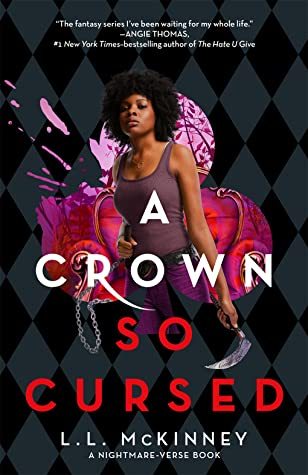


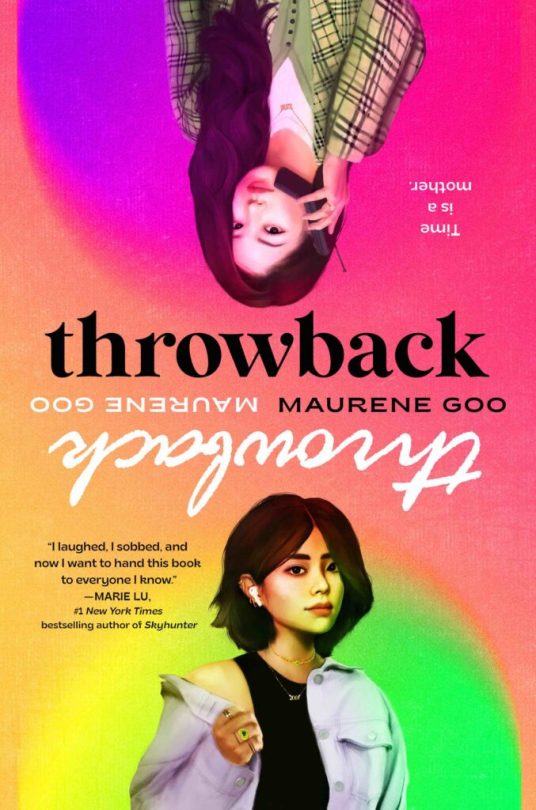
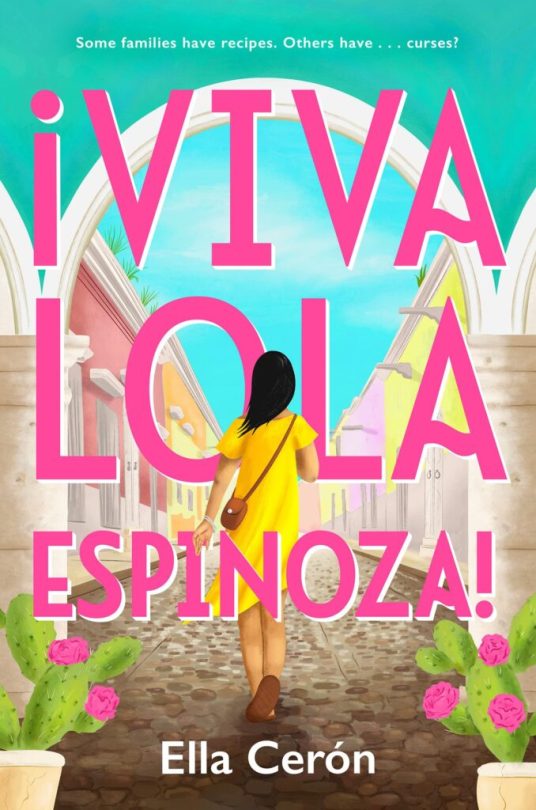
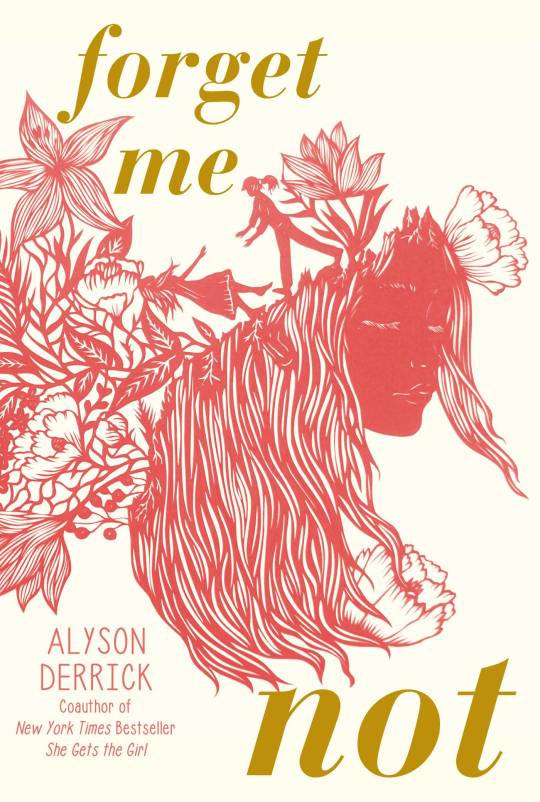
New Releases
A great mix of new releases this week that make it hard to choose which exactly one I will buy for myself to celebrate making it to spring break. What would you choose?
A Crown So Cursed (The Nightmare–Verse #3) by L.L. McKinney
Imprint
In the third book in L.L. McKinney’s Nightmare-Verse trilogy, Alice gets one last chance to save Wonderland from itself.
Alice and the gang are trying to recover from recent events—but members of her crew start having weird dreams. The same dreams. It seems the evil in Wonderland may not be as defeated as they thought—because someone’s building an army of Nightmares to attack the mortal world. But before Alice jumps into battle, she discovers she has a personal connection to Wonderland, and she must face what it means for the fight ahead. — Cover image and summary via Goodreads
The Making of Yolanda la Bruja by Lorraine Avila
Levine Querido
Yolanda Alvarez is having a good year. She’s starting to feel at home Julia De Burgos High, her school in the Bronx. She has her best friend Victory, and maybe something with Jose, a senior boy she’s getting to know. She’s confident her initiation into her family’s bruja tradition will happen soon.
But then a white boy, the son of a politician, appears at Julia De Burgos High, and his vibes are off. And Yolanda’s initiation begins with a series of troubling visions of the violence this boy threatens. How can Yolanda protect her community, in a world that doesn’t listen? Only with the wisdom and love of her family, friends, and community – and the Brujas Diosas, her ancestors and guides.
The Making of Yolanda La Bruja is the book this country, struggling with the plague of gun violence, so desperately needs, but which few could write. Here Lorraine Avila brings a story born from the intersection of race, justice, education, and spirituality that will capture readers everywhere. — Cover image and summary via Goodreads
Throwback by Maurene Goo
Zando Young Readers
Back to the Future meets The Joy Luck Club in this YA contemporary romance about a Korean American girl sent back to the ’90s to (reluctantly) help her teenage mom win Homecoming Queen.
Being a first-generation Asian American immigrant is hard. You know what’s harder? Being the daughter of one. Samantha Kang has never gotten along with her mother, Priscilla—and has never understood her bougie-nightmare, John Hughes high school expectations. After a huge fight between them, Sam is desperate to move forward—but instead, finds herself thrown back. Way back.
To her shock, Sam finds herself back in high school . . . in the ’90s . . . with a 17-year-old Priscilla. Now this Gen Z girl must try to fit into an analog world. She’s got the fashion down, but everything else is baffling. What is “microfiche”? What’s with the casual racism and misogyny? And why does it feel like Priscilla is someone she could actually be . . . friends with?
Sam’s blast to the past has her finding the right romance in the wrong time while questioning everything she thought she knew about her mom . . . and herself. Will Sam figure out what she needs to do to fix things for her mom so that she can go back to a time she understands? Brimming with heart and humor, Maurene Goo’s time-travel romance asks big questions about what exactly one inherits and loses in the immigrant experience. — Cover image and summary via Goodreads
Viva Lola Espinoza! by Ella Cerón
Kokila
A debut young adult novel that’s BOOKSMART with a dash of magic, about a Mexican American teen who spends the summer in Mexico City, meets two very cute boys, attempts to learn Spanish, and uncovers a family secret that changes her life forever.
Lola Espinoza is cursed in love. Well, maybe not actually cursed — magic isn’t real, is it? When Lola goes to spend the summer with her grandmother in Mexico City and meets handsome, flirtatious Rio, she discovers the unbelievable truth: Magic is very real, and what she’d always written off as bad luck is actually, truly . . . a curse. If Lola ever wants to fall in love without suffering the consequences, she’ll have to break the curse. She finds an unlikely curse-breaking companion in Javi, a seemingly stoic boy she meets while working in her cousin’s restaurant. Javi is willing to help Lola look into this family curse of hers, and Lola needs all the help she can get. Over the course of one summer — filled with food, family, and two very different boys — Lola explores Mexico City while learning about herself, her heritage, and the magic around us all. — Cover image and summary via Goodreads
Harvest House by Cynthia Leitich Smith
Candlewick Press
Deftly leading readers to the literary crossroads of contemporary realism and haunting mystery, Cynthia Leitich Smith revisits the world of her American Indian Youth Literature Award winner Hearts Unbroken. Halloween is near, and Hughie Wolfe is volunteering at a new rural attraction: Harvest House. He’s excited to take part in the fun, spooky show—until he learns that an actor playing the vengeful spirit of an “Indian maiden,” a ghost inspired by local legend, will headline. Folklore aside, unusual things have been happening at night at the crossroads near Harvest House. A creepy man is stalking teenage girls and young women, particularly Indigenous women; dogs are fretful and on edge; and wild animals are behaving strangely. While Hughie weighs how and when to speak up about the bigoted legend, he and his friends begin to investigate the crossroads and whether it might be haunted after all. As Moon rises on All Hallow’s Eve, will they be able to protect themselves and their community? Gripping and evocative, Harvest House showcases a versatile storyteller at her spooky, unsettling best. — Cover image and summary via Goodreads
Ooops! We missed a book last week. What do you think of this new release?
Forget Me Not by Alyson Derrick
Simon & Schuster Books for Young Readers
A romantic ode to the strength of love and the power of choosing each other, against odds and obstacles, again and again.
What would you do if you forgot the love of your life ever even existed?
Stevie and Nora had a love. A secret, epic, once-in-a-lifetime kind of love. They also had a plan: to leave their small, ultra-conservative town and families behind after graduation and move to California, where they could finally stop hiding that love.
But then Stevie has a terrible fall. And when she comes to, she can remember nothing of the last two years—not California, not coming to terms with her sexuality, not even Nora. Suddenly, Stevie finds herself in a life she doesn’t quite understand, one where she’s estranged from her parents, drifting away from her friends, lying about the hours she works, dating a boy she can’t remember crushing on, and headed towards a future that isn’t at all what her fifteen-year-old self would have envisioned.
And Nora finds herself…forgotten. Can the two beat the odds a second time and find their way back together when “together” itself is just a lost memory?
21 notes
·
View notes
Text
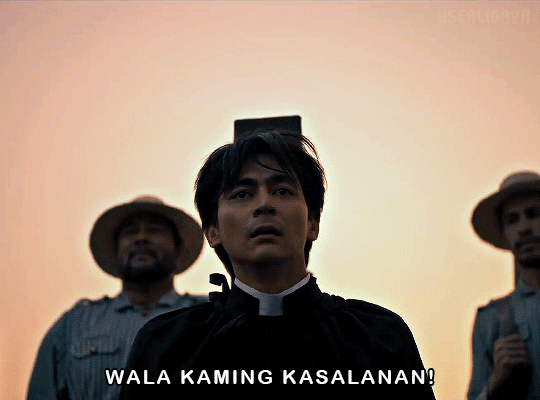
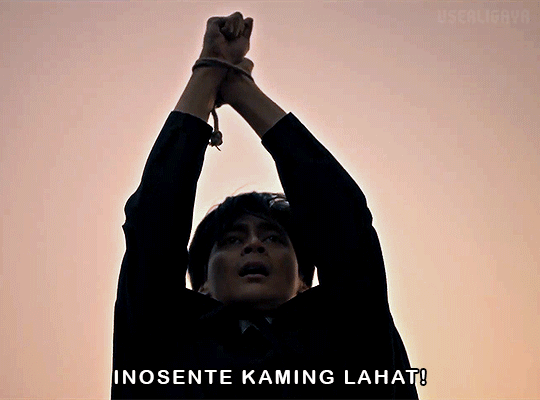

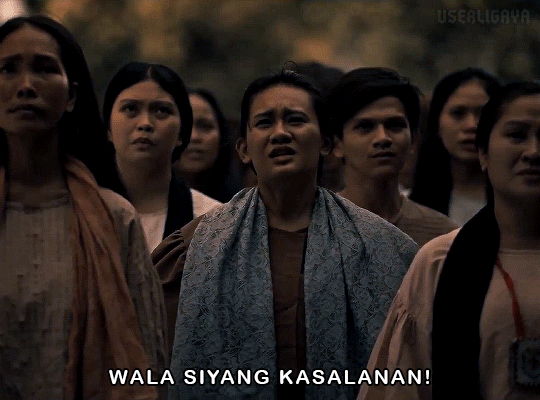





Even Christ himself was innocent.
GOMBURZA (2023) | dir. pepe diokno
#gomburza#padre jose burgos#cedrick juan#mmff 2023#gomburzaedit#perioddramaedit#philippines#*pinoy pride#pinoysource#userligaya#lives were CHANGED#WALA SIYANG KASALANAN!!!!#EVEN CHRIST HIMSELF WAS INNOCENT!!!!!!!#AND THATS ON MMFF 2023 BEST ACTOR#PAUL CEDRICK GUTIERREZ JUAN EVERYBODY!!!!
28 notes
·
View notes
Text
The church came with Spanish colonialism more than four centuries ago. It was under royal patronage. It may be said to have been an instrument of colonial policy and an adjunct of the brutal conquest of the people. And it may also be said to have been a civilizing force and a practical utilizer of colonialism as a means of carrying out the overriding spiritual mission.
At any rate, the Catholic church teamed up with Spanish lay authorities in building a colonial and feudal society out of the less developed and disparate native communities and in running a theocratic state from the 16th to the 19th century.
What stands out in the revolutionary anti-colonial and democratic consciousness of the people is that as a temporal or historical institution, the Catholic church, especially the friars, engaged in oppression and exploitation and that the officialdom of this church was determinedly against liberal reforms and then far more vigorously against the Philippine Revolution of 1896 whose main line was separation and independence from Spain.
But the church was also composed of people who owed loyalty to it as a religious institution. And there were leaders of the church— like Father Burgos—who inspired patriotic sentiments as they demanded respect for the rights of native secular priests and suffered injustice. There were priests who joined and took active part in the Philippine revolution. Father Aglipay stood out as vicar general of the Philippine revolutionary army and as an active guerrilla leader against the US war of aggression. There is more than enough basis in Philippine history for Filipino priests to formulate and espouse a theology of liberation.
Jose Maria Sison, The Role of the Church in Social Change (1986)
4 notes
·
View notes
Text

I cant believe mas nauna ko pang i-draw si Padre Burgos(ft. Cedrick J.) Kaysa kay Simoun🧍♀️🧍♀️
9 notes
·
View notes
Text
What do you do when your school gives you a semestral break after exams?
I, Cezane Krishna G. Pasion, a freshman in the Regional Science High school for Region 02 and this is what i did after our 2nd Quarterly examination break. Why do students need a semestral break after exams? It provides students with a pause from academic commands.
As a RegSciHigher and a dormer, I experienced a lot during my freshman year in the Regional Science High school. Highschool is not easy! You have to go through a lot before even going to Senior High and College; high school prepare us before we go to a much harder lessons. During school days, I was not able to see my family face-to-face for five days and without my parents' support I will not be able to come this far. Without further ado, this is what I did during our semestral break.
On the first day, the day after the 2nd Quarterly Examination my parents told me and my siblings to come with them to withns and celebrate the Bambanti festival. We headed to our booth to take a photo and look at our booth which is the Municipality of Burgos, the design of each booths we saw were mesmerizing and unique in their own way. Next, we watched the Miss Isabela 2024; the candidates were all beautiful and stunning during the pageant.
On the 2nd day, my brother and I were just left at home because my little brother was at school and my parents were at work. While i was in the house, i decided to find new hobbies for me to try. I also learned about our next lessons in our subjects. I also tried to stay up late but I couldn't because I was too sleepy at that moment but even if i try to stay up late, my parents would get mad since I would just ended up waking up late.
On the 3rd day, we returned to Bambanti festival to watch street dance, concerts and the awarding. I stared at them saying "How can they do it that good?" came up my mind especially the concert since the mixes of their voices were just beautiful to hear. Even Julie Ann San Jose came up to the stage of the sports complex she sang so pleasing and ravishingly. When it was time to announce the awardees, we got second place for the best scare crow.
On the last day of Bambanti festival, my cousin said she wanted to go with us because there would be another concert since she didn't go to the previous days and today was the last day of the Bambanti festival. We screamed because we saw THE JUANS and they were so good at singing and playing the piano, drums and electric guitar so well. After the concert, we ate popcorn and street foods and roamed around Bambanti festival.
I also had a sleepover with my elementary friends at my house for a little reunion after a long time of not seeing each other since we go to different school for the reason that they didn't pass the 1st screening test in Regional Science. I all missed spending time with them; our hangouts during elementary days were never never a forgetful memory, "them", being a part of my elementary journey is unforgettable. We made most of the time chatting, playing, sharing gossips and telling what we do in school for better and fun entertainment; we also did a movie marathon to really enjoy the little time with them.
Church is a place where we worship the God, and each Catholic people go to church on Sundays. I also go to church every Sunday to pray and listen to the lectures of the Father. I also eat the Ostya given by the church, kneel down and pray.
With the help of technology and multimedia, we can use them in order to appease boredom and give entertainment. It is also a form of activity that holds the attention and interest of an audience or gives pleasure and delight.
All happiness is a combination of enjoyment, satisfaction and meaning. That's what our lives need enjoyment and freedom. We need to enjoy our lives every time since we only live once.
There is always someone who always listens and tells heart-warming comforts. We can always learn from our downs in order to go up. Don't let someone ruin the dreams, plans and mostly your confidence on how to stand up by yourself and go up yourself. There is nothing impossible if we try, just keep on trying and trying until we reach.
Confidence is the key to succeed in life, without the full confidence we can't do anything. Feeling sure of yourself and your abilities. Being insecure about what we do isn't going to make a change in our life. Insecure is just thinking about what people think about us and that makes us lose the confidence we need to succeed.
Semestral break is good for students especially after a tough week. Everyone even teachers need a long break in order to have a peace of mind and we all have personal intentions. Going out or staying at home, having a short break from school was truly a lightweight feeling in the body.
A never ending saga of learning will soon be paid off if we do our best in our studies. Every up and down will all be worth it in the end. Trust on yourself and we can do all the things working together.
In conclusion, a good break starts with peace, learning new hobbies, and having a great time. We need to spend our rest days full of enjoyment and memories together with our loved ones. Like spending time with our families, we can share our problems and they can be our listeners and our friends who were always listening and there for me always.
2 notes
·
View notes